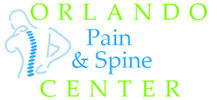What is it?
A joint injection typically contains a local anesthetic and a corticosteroid. The local anesthetic, similar to what you might receive at the dentist, provides early pain relief, while the steroid suppresses inflammation and decreases swelling for long-term pain relief.
In addition to treating joint pain, the injections are used as a diagnostic tool. The local anesthetic has a numbing effect in the joint, and the amount of immediate pain relief experienced will help confirm or rule out the joint as a source of pain.
A lot of times during the procedure, fluoroscropy (x-ray) is used to ensure proper placement of the needle and accurate delivery of the medication to the joint area.
How Long does the Procedure Take?
Joint injections are safely performed on an outpatient basis. The procedure typically requires 20 minutes, including preparation time, and is followed by a short period of observed recovery time. Pain relief using joint injections is expected to last several months or longer. If needed, the injections may be repeated a few times during the year.
What are the Expected Results?
After the injection, you may experience immediate but temporary pain relief from the local anesthetic. Because steroids need several days to deliver noticeable benefits, there is a window of time when the pain returns or even worsens. If the pain worsens, it usually subsides within a day or two. Generally, it’s recommended that you take it easy the day of the procedure, but return to your usual activities the following day.
Although the injections do not change the underlying condition, they can break the cycle of pain and inflammation and allow time for exercise or physical therapy to strengthen muscles and get the joint moving again in order to decrease ongoing problems.
For even longer lasting benefits, advanced, regenerative procedures, such as stem cell therapy, prolotherapy, and platelet rich plasma (PRP) therapy, may be recommended. These innovative techniques promote healing and the potential for permanent improvement.
